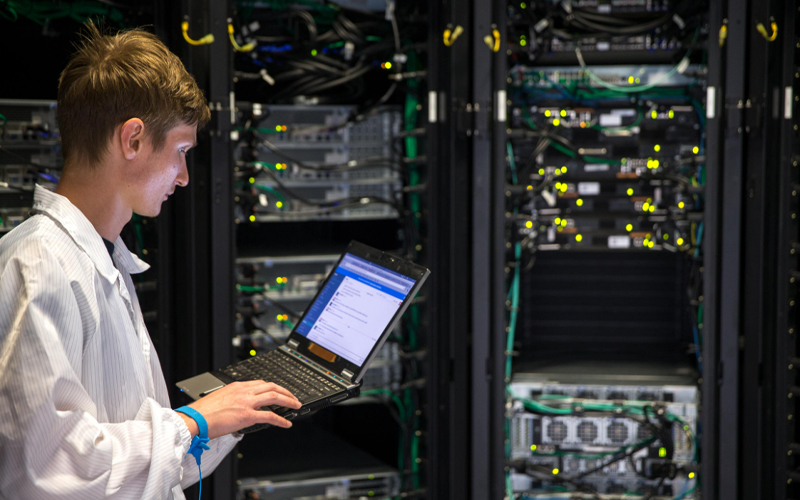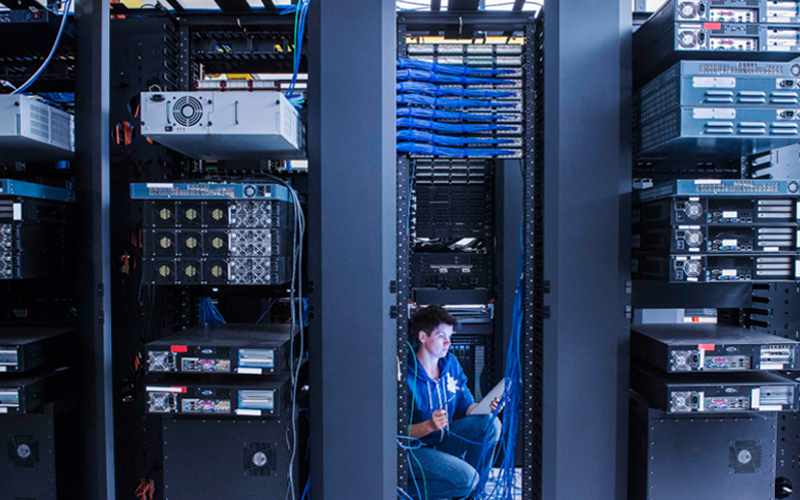For a decade, telecommunications providers have grappled with a significant decline in their traditional revenues. The proliferation of internet services and OTT players cannibalised the telecom industry’s market share, particularly in the B2C sector.
Larger telecoms tried to sustain themselves by bundling with OTT platforms or through strategic acquisitions. However, this was not a viable business model. Now, with the rise of the Internet of Things (IoT), telecoms can finally revamp their core offerings and get back on top.
Embedding digital allows telecommunication carriers to foray into the B2B space with industry-specific services. IoT applications in telecom spell differentiation, fresh product offerings, and assured revenue for the telecom industry.
IoT and telecom service providers
Digital technologies and virtual lifestyles have created a huge demand for connected devices. With the volumes of data and connectivity that telecoms possess, they already enjoy a competitive advantage.
Larger carriers such as Vodafone and AT&T have started offering narrowband IoT networks for long-range connectivity and comprehensive coverage. However, merely upgrading core offerings is not enough for long-term gains.
To monetise IoT for sustained revenue growth, telecoms must partner with other players in the IoT ecosystem and embrace technologies like cloud computing, edge computing, big data analytics, and AI to create innovative services for consumers and businesses.
Best IoT use cases for telecom revenue growth
There are multiple ways for telecoms to establish themselves as IoT service providers and monetise IoT-based solutions. Below are a few:
- Internal use cases
- Tracking and connecting physical assets
- Monitoring networks and data centres
- Monitoring equipment performance and malfunctions
- Managing security and surveillance
- Streamlining supply chain operations
- Managing service vehicle fleets
- IoT connectivity and device management services
- Low-power WAN
- Location services
- Data analytics
- Security solutions
- Industrial monitoring
- Industry-specific offerings
- Healthcare
- Transport
- Agriculture
- Smart cities
Leveraging IoT internally can help telecoms improve their operations and drive significant cost savings.
71% of telecom and IT companies embraced IoT over five years ago when it became mainstream for commercial use. A leading multinational telecom company successfully curbed internal energy usage by 9M kWh within the first year through IoT usage, amounting to $1 million in savings.
Internal use cases of IoT applications in telecom include:
Offering connectivity services and data plans to IoT device users is a primary use case in the B2C market. Like 2G, 3G, and 4G plans, telecoms can customise IoT plans, too, based on usage.
Additionally, telecoms can provide platforms for IoT device management and troubleshooting. By creating a complete infrastructure for device usage and maintenance, telecoms can ensure high-quality customer service and sustained revenue.
Industries currently use high-bandwidth technologies like WiFi and GSM for machine-to-machine (M2M) communication. IoT enables low-power, low-cost, energy-efficient Wide Area Networks (WAN) for last-mile connectivity between machines. Telecoms can generate revenue by providing WAN services to businesses.
Location tracking is among the key IoT applications in telecom. IoT-based location sensors have numerous use cases in smart city applications, transportation, and tourism.
IoT devices generate enormous amounts of data. Telecoms can monetise IoT data by offering analytics and data insights to businesses as a service.
Telecoms can develop advanced security solutions for IoT networks through access controls, firewalls, remote sensors, intrusion detection systems, and blockchain technologies. Since data privacy and security are critical for all industries with digital assets, telecoms can generate assured revenue through security services.
With modern manufacturing facilities extensively embracing IoT, telecoms can capitalise on industrial asset monitoring and providing connectivity across intelligent supply chains.
Industrial monitoring systems may include a plethora of IoT devices that provide end-to-end visibility into equipment performance and supply chains, such as sensors, intelligent surveillance equipment, hazard detection software, location trackers, and predictive maintenance models.
Industry-specific innovations can be key in boosting telecom revenue growth. Some potential industry applications include -
IoT applications in telecom can support remote device and patient monitoring, doorstep healthcare delivery, remote diagnostics, wearables, and more.
Telecom companies can provide the connectivity, location tracking, and control services required for autonomous vehicles and connected fleets.
With IoT, telecoms can power the environmental sensors and automated irrigation systems required for remote crop monitoring and nurturing.
Smart cities and buildings can foster assured revenue for telecoms through connectivity solutions for an integrated urban infrastructure.
Smart cities will also enable telecoms to partner with verticals such as education, entertainment, retail, and healthcare to generate additional revenue streams through a shared economy.
Navigating challenges in IoT monetisation
While monetising IoT has undeniable advantages for telecoms, it will not be a smooth ride. The current IoT ecosystem is complex and fragmented. Telecoms can expect to face significant challenges around –
- Scalability
- Data security
- Interoperability of devices and technologies
- Integration of diverse IoT applications into various endpoints
Here are a few recommendations for telecoms planning to develop IoT applications and services:
- Improve connectivity
- Build an ecosystem
- Adopt an API-first approach
- Go cloud-native
- Deploy microservices-based architecture
Expand network connectivity with new technologies such as LPWAN, satellites, and cellular options.
Create a stable ecosystem through strategic partnerships with other verticals.
Open your APIs to developers. View APIs as a strategic asset rather than an integration technology.
Embrace a cloud-native approach to IoT application development to enable scalability, security, flexibility, and the ease of integrating new functionalities.
Leverage microservices architecture for greater platform efficiency and resilience.
For organisations on the digital transformation journey, agility is key in responding to a rapidly changing technology and business landscape. Now more than ever, it is crucial to deliver and exceed organisational expectations with a robust digital mindset backed by innovation. Enabling businesses to sense, learn, respond, and evolve like living organisms will be imperative for business excellence. A comprehensive yet modular suite of services is doing precisely that. Equipping organisations with intuitive decision-making automatically at scale, actionable insights based on real-time solutions, anytime/anywhere experience, and in-depth data visibility across functions leading to hyper-productivity, Live Enterprise is building connected organisations that are innovating collaboratively for the future.
How can Infosys BPM help?
Infosys BPM helps CSPs maximise revenue and eliminate losses through revenue analytics, assessment, and auditing. Our Telecom Revenue Assurance and Maximisation (TRAM) solutions and efficient tech teams assist you in navigating technology challenges and preventing data leakage stemming from network evolution and complexity.
Know how Infosys BPM provide telecom revenue assurance that can help you enhance your digital offerings.







